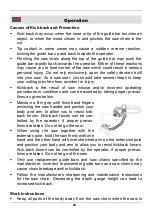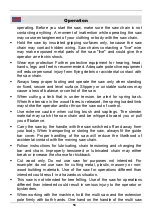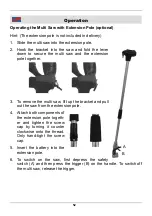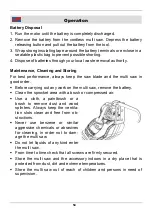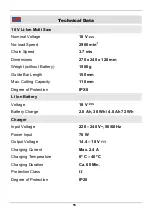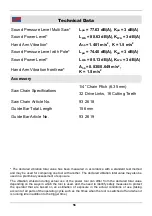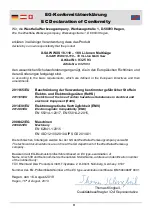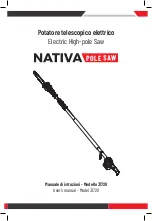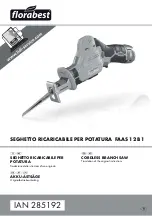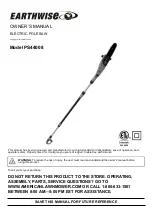
49
Operation
Causes of Kick-back and Prevention
▪
Kick-back may occur when the nose or tip of the guide bar touches an
object, or when the wood closes in and pinches the saw chain in the
cut.
▪
Tip contact in some cases may cause a sudden reverse reaction,
kicking the guide bar up and back towards the operator.
▪
Pinching the saw chain along the top of the guide bar may push the
guide bar rapidly back towards the operator. Either of these reactions
may cause you to lose control of the saw which could result in serious
personal injury. Do not rely exclusively upon the safety devices built
into your saw. As a saw user, you should take several steps to keep
your cutting jobs free from accident or injury.
▪
Kickback is the result of saw misuse and/or incorrect operating
procedures or conditions and can be avoided by taking proper precau-
tions as given below:
▪
Maintain a firm grip, with thumb and fingers
encircling the saw handle and positon your
body and arm to allow you to resist kick-
back forces. Kick-back forces can be con-
trolled by the operator, if proper precau-
tions are taken. Do not let go the saw.
▪
When using the saw together with the
extension pole, hold the saw firmly with one
hand and the other hand with overstretched arm on the extension pole
and position your body and arm to allow you to resist kickback forces.
Kick-back forces can be controlled by the operator, if proper precau-
tions are taken. Do not let go of the saw.
▪
Only use replacement guide bars and saw chains specified by the
manufacturer. Incorrect replacement guide bars and saw chains may
cause chain breakage and/or kickback.
▪
Follow the manufacturer’s sharpening and maintenance instructions
for the saw chain. Decreasing the depth gauge height can lead to
increased kick-back.
Work Instructions
▪
Keep all parts of the body away from the saw chain when the saw is















